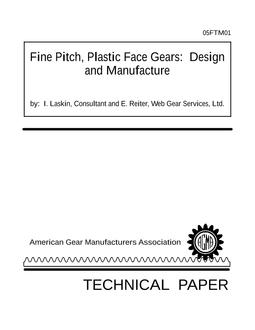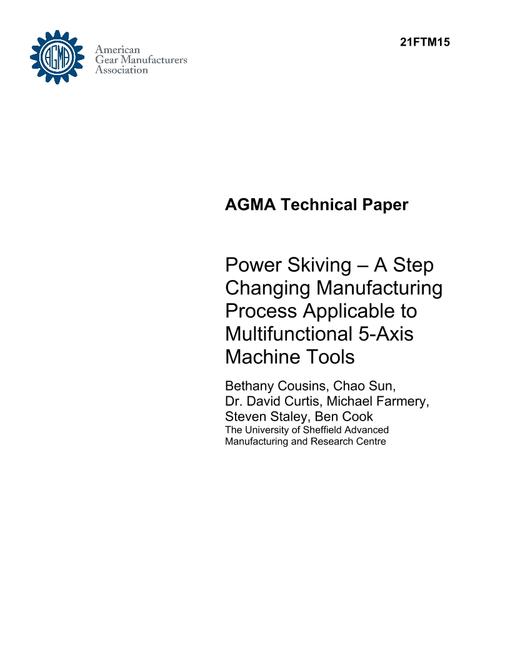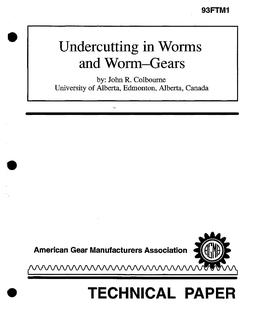-
-
Available Formats
- Availability
- Priced From ( in USD )
-
Available Formats
-
- Immediate download
- $85.00
- Add to Cart
-
- Printed Edition
- Ships in 1-2 business days
- $85.00
- Add to Cart
Customers Who Bought This Also Bought
-

AGMA 05FTM01
Priced From $47.00 -

AGMA 21FTM15
Priced From $85.00 -

AGMA 93FTM1
Priced From $47.00 -

AGMA 19FTM21
Priced From $85.00
About This Item
Full Description
Strength rating of bevel gears according to standards such as AGMA, ISO, etc. is executed based on virtual cylindrical gears, only modified by a few specific bevel gear factors. The rating method of these standards also includes the calculation of permissible stresses and finally resulting safety factors. Furthermore, the integrated S-N curves consider also an increased permissible stress during limited life and allow a lifetime prediction.
The contact analysis for bevel gears allows a rating of the stresses. It allows the individual to consider flank modifications such as crowning, twist, etc., including the corresponding displacements. A lack of the contact analysis is the calculation of permissible stresses and hence no rating of safety and lifetime is available.
To combine both methods, the standard requires a certain level of adaptation possibilities, to tune the major effects which influence the stresses. Whereas ISO 10300 (edition 2014) has factors that allow an adaptation, the AGMA 2003:C10 standard has little possibilities. Also, the bending stress numbers of AGMA 2003 are much lower and differ remarkably from the contact analysis values.
The process to combine both calculation approaches increases the accuracy in the rating of bevel gears significantly. The first step is to determine the E, P, G and Alpha displacements for a sample bevel gear pair. By using the E, P, G and Alpha displacements, the largest possible contact pattern is developed, strictly avoiding any edge contact. Based on the stress numbers by the contact analysis, the relevant parameters of the rating standard are derived.
As a next step, using the fast standard calculation, the bevel gear macro geometry is optimized by variation of the key parameters. All these solutions can be evaluated with various failures modes such as root bending, pitting, scuffing, and flank fracture.





